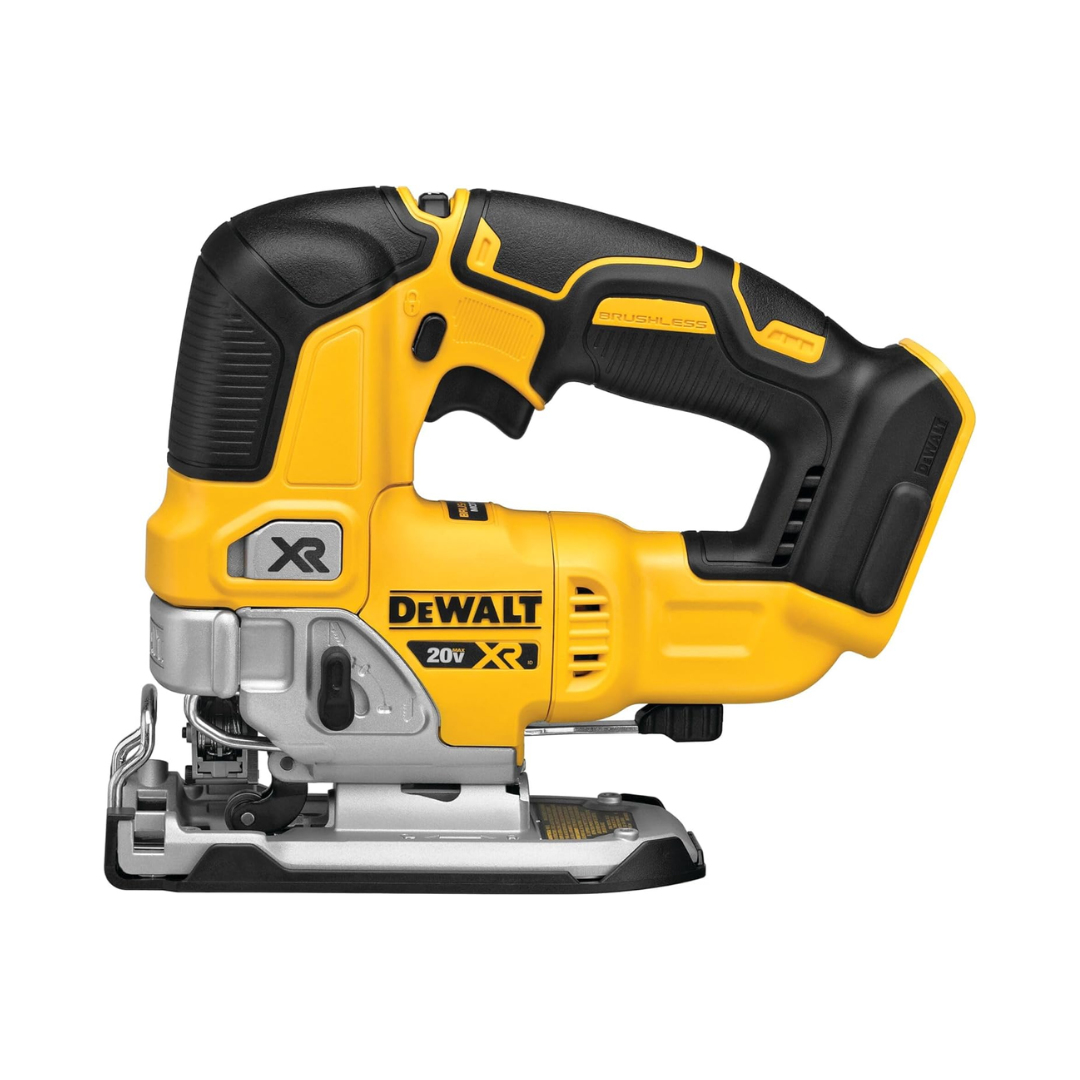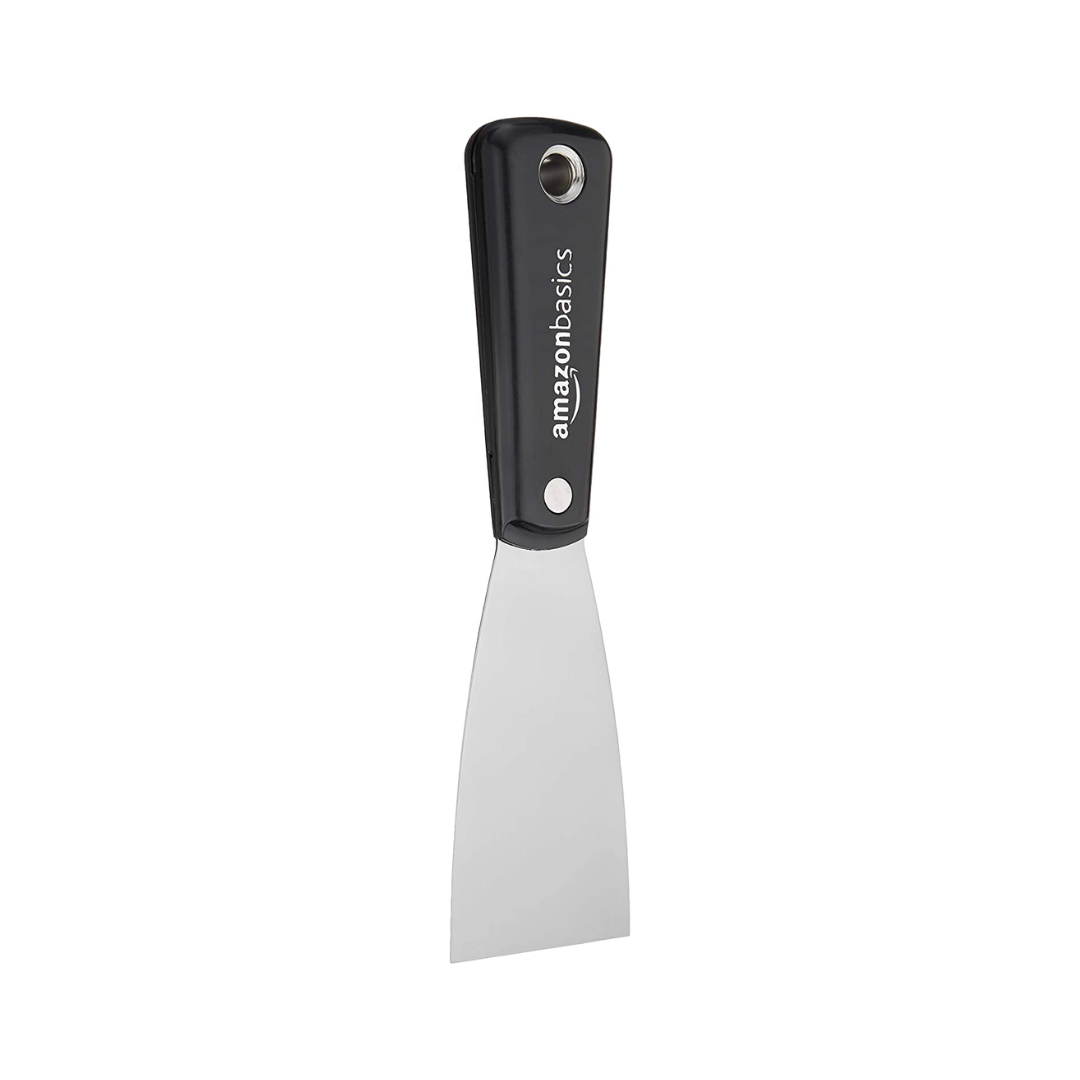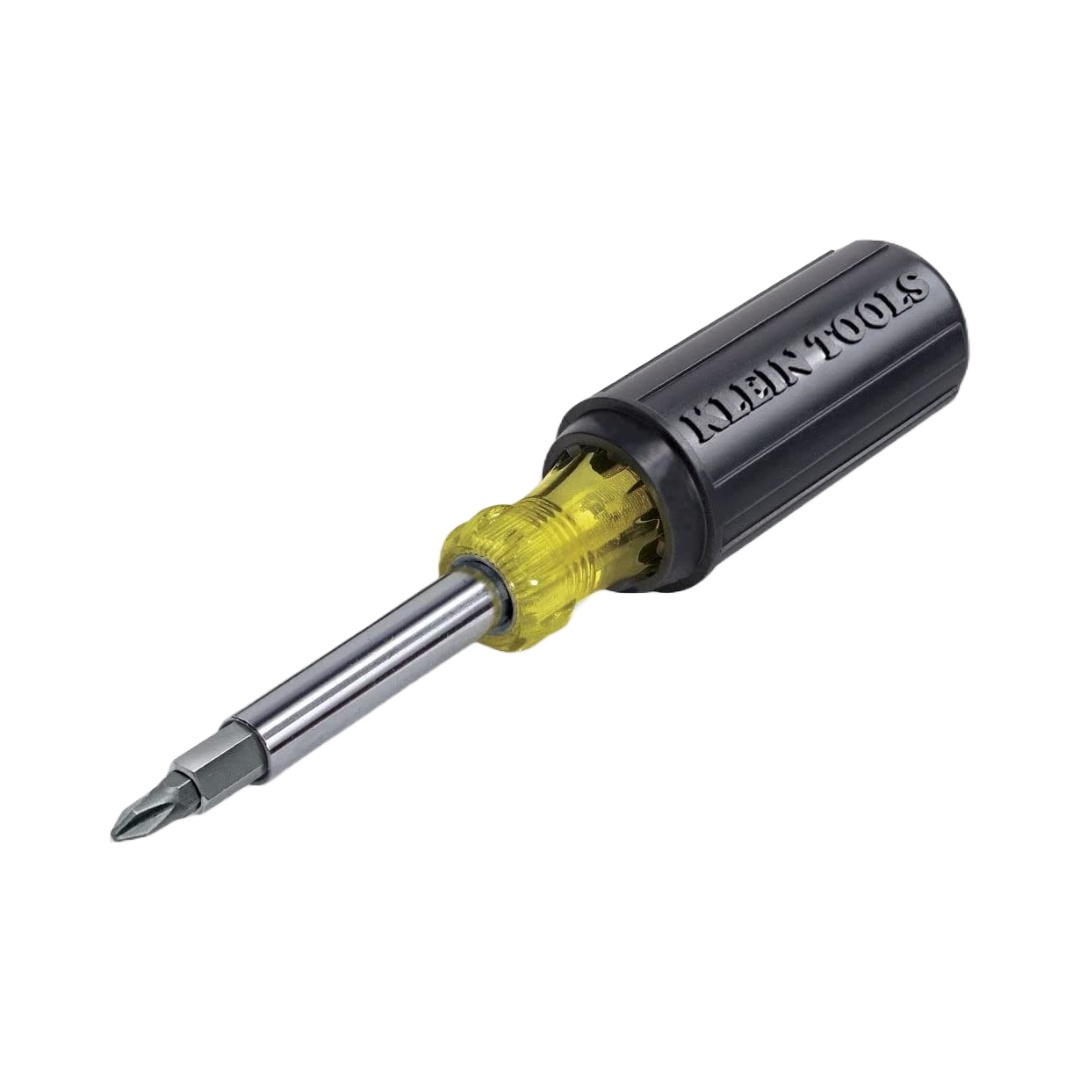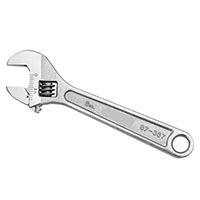Project details
Skill
Cost
Estimated Time
We may be compensated if you purchase through links on our website. Our team is committed to delivering honest, objective, and independent reviews on home products and services.
Your dog follows you everywhere: on walks to the park, down the driveway to get the mail, and even to bed at night. But when one hop doesn’t quite cut it anymore, or arthritis makes the trip to bed too painful, the addition of a handy ramp that collapses for storage and hides away pet bedding feels like a custom fit. In fact, if your furry best friend is part of the 20 percent of adult dogs experts say suffer from osteoarthritis, the gentle incline could even help avoid injury.
Example Plan for a Dog Ramp
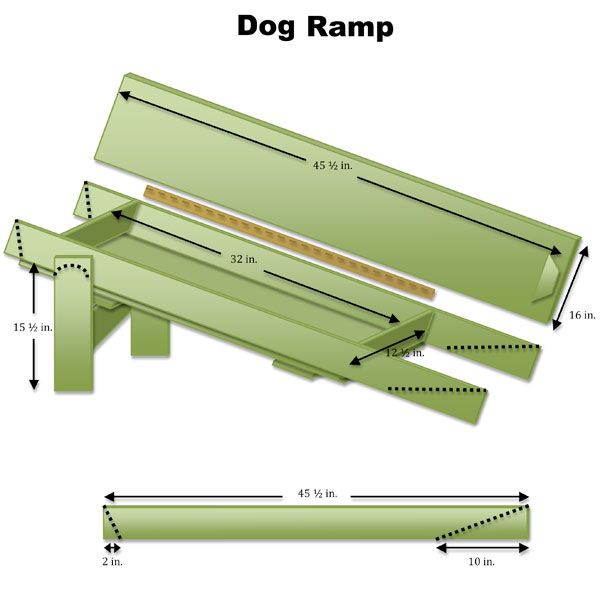
Cut List
Download printable cut list and plan
- Plywood bottom – 1 @ 14x 31½ inches
- 1×5 sides – 2 @ 12½ inches
- 1×5 sides – 2 @ 45 inches
- 1×5 bottom crosspiece – 1 @ 14 inches
- 1×5 legs – 2 @ 15½ inches
- 1×5 leg crosspieces – 1 @ 14½ inches
- 1×16 lid – 1 @ 45½ inches
- 1×3 block handle – 1 @ 7 inches
Shopping List
- 1 6-foot 1×12 laminated shelving board
- 2 8-foot 1×5 boards
- 1 5/8-inch trim head screws
- 2 3/8-inch 2½-inch bolts
- 10 3/8-inch washers
- 2 3/8-inch locking nuts
- Wood glue
- Wood filler
- 1 30-inch piano hinge
- 1 folding door hinge
- Toy box lid supports
- 1 drawer pull
- Nonskid rubber strips or pads
- Round skid feet
- Latex primer
- Latex semi-gloss paint
- Contact cement
- Non-skid/sisal rug
- 1 coffee can (for tracing curves)
Tools:
Below are tools handpicked by our reviews team.
Cutting the Parts of the Dog Ramp
You’ll need to make some cuts before you start with assembly.
Cutting the Ramp Box
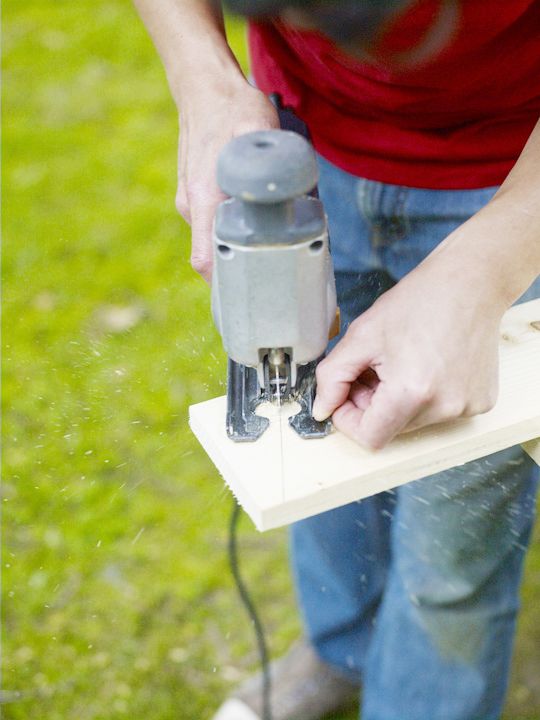
Using a jigsaw, cut the parts of the box, top, and legs to length according to the measurements on the cut list. On the long 1×5 sides of the box, mark the edge 2 inches from one end and 10 inches from the other end.
Using a jigsaw guided by a straightedge, cut off the corners of the 1×5 at each of these marks. The longer cut will be at the front of the ramp, where it will sit on the floor. The shorter cut will be at the back, or top, of the ramp, where it meets the edge of the bed.
Cutting the Legs

Use a coffee can as a template to trace a curve at the top of each leg. Cut along this line with a jigsaw to create rounded tops for a more finished look.
Assembling the Dog Ramp
With all your pieces cut, you can now begin assembling the base of your dog ramp.
Building the Box Sides
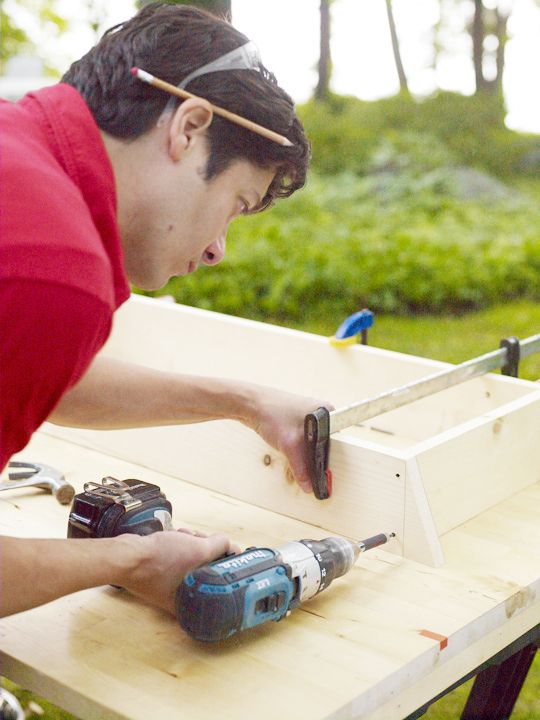
Start by marking 2 inches from the longest point at the back of each 1×5 side piece and 10 inches from the longest point at the front. Using a speed square, draw square lines across the 1×5 at each mark. These lines will guide the placement of the short end pieces.
Position the 12½-inch box ends between the sides, aligning them with the drawn lines. Clamp the pieces in place to maintain squareness, then use a drill/driver to secure them with 1 5/8-inch trim head screws through the long sides and into the ends.
Attaching the Bottom and Crosspiece
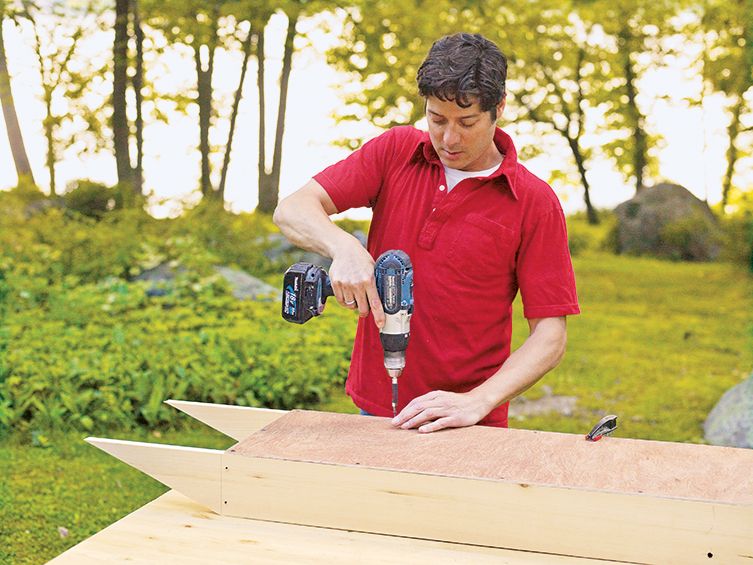
Once you’ve put together the sides of the ramp, it’s time to attach the plywood bottom. Using your drill/driver and 1 5/8-inch trim head screws, fasten the plywood to the bottom edge of the box sides.
Next, attach the 14-inch 1×5 crosspiece flush with the front edge of the plywood bottom. This crosspiece adds stability to the structure and provides a solid base for the ramp surface.
Constructing the Folding Mechanism of the Dog Ramp
A key feature of our dog ramp design is its folding mechanism, which allows you to tuck the ramp away when you’re not using it.
Drilling for the Leg Bolts
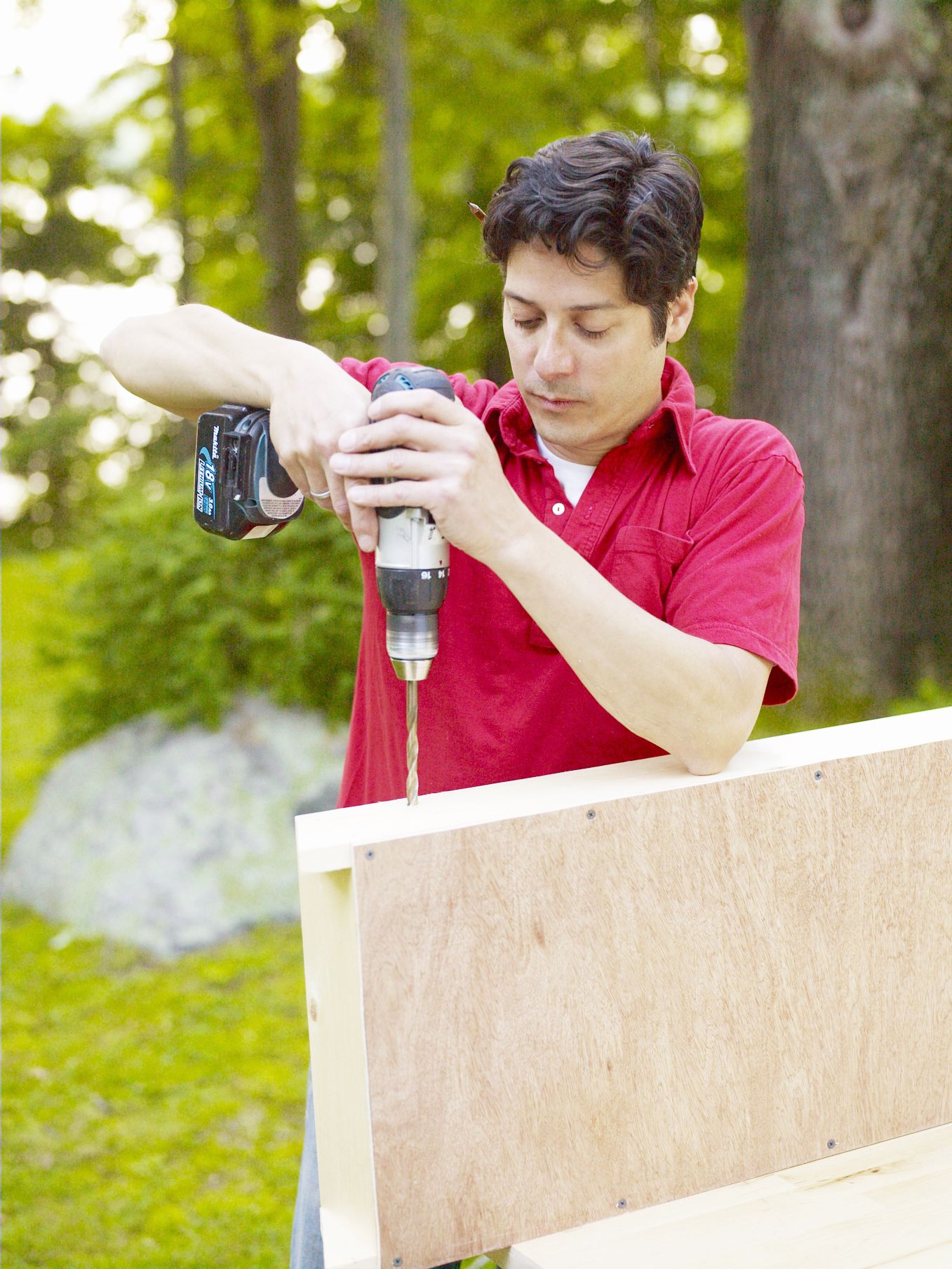
Using a drill driver fitted with a 3/8-inch drill bit, bore a hole at the back end of each long side that’s 1½ inches from the bottom edge and 3½ inches from the shortest point at the back of the box.
Drilling Bolt Holes in the Legs
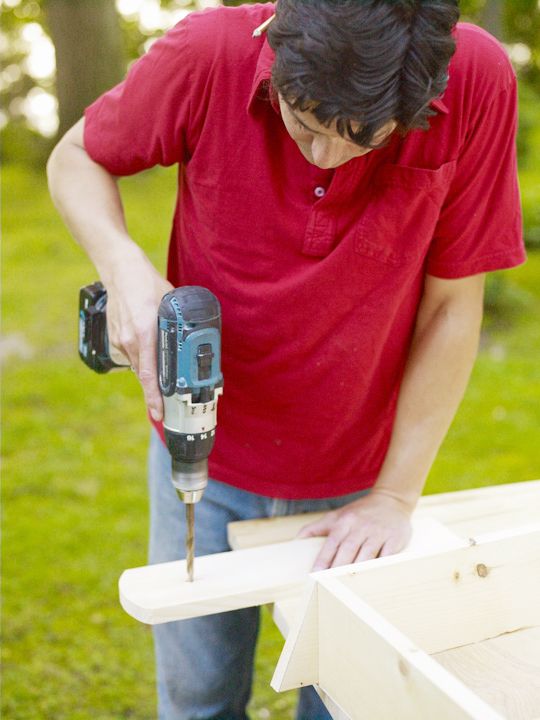
Next, you’ll need to drill a 3/8 inch centered hole 13½ inches from the bottom of each leg. Screw the leg crosspiece between the legs with the ends of the crosspiece flush with the back edge of the legs. Using a putty knife, fill all the seams and fastener holes with wood putty. Sand, prime, and paint all the parts.
Attaching the Legs
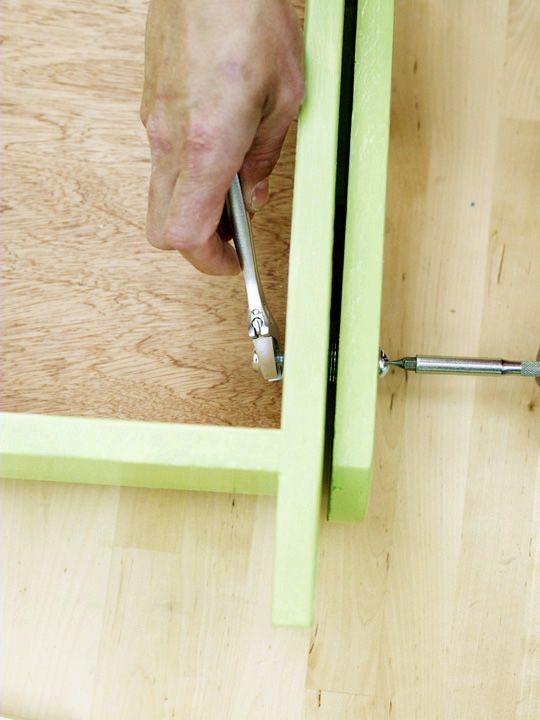
Insert a 3/8-inch bolt through the leg and box using a washer on the outside of the leg, four washers between the leg and the box, a washer on the inside of the box, and a locking nut on the end of the bolt. Tighten the bolt with a screwdriver and an adjustable wrench.
Final Assembly and Finishing Touches of the Dog Ramp
The final steps to assemble your dog ramp are to attach the legs and add some hardware and accessories.
Installing the Ramp Lid
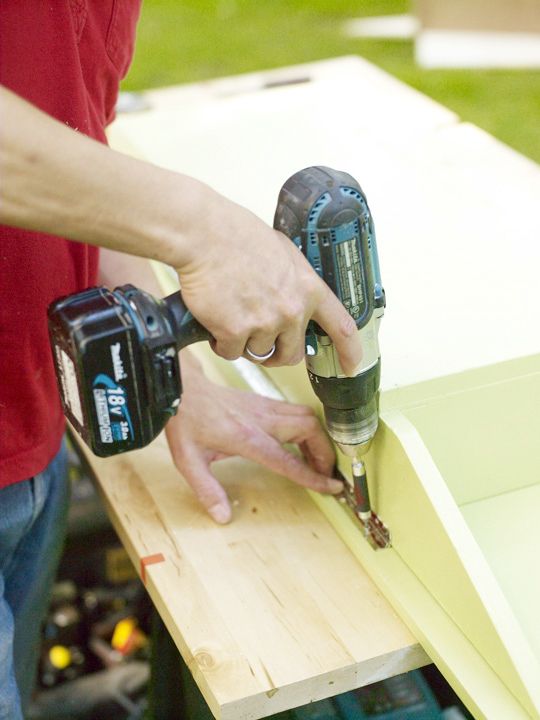
Fasten a block to the underside of the lid, ½ inch from one end. This block will serve as a handle for pulling the collapsed ramp out from underneath the bed.
Set the box upside down onto the underside of the lid. Center the box between the sides of the lid so that the ends sit flush with the ends of the lid. Using a drill/driver, secure a 30-inch piano hinge, knuckle side out, to the side of the box. Screw the hinge to the underside of the lid.
Adding Hardware
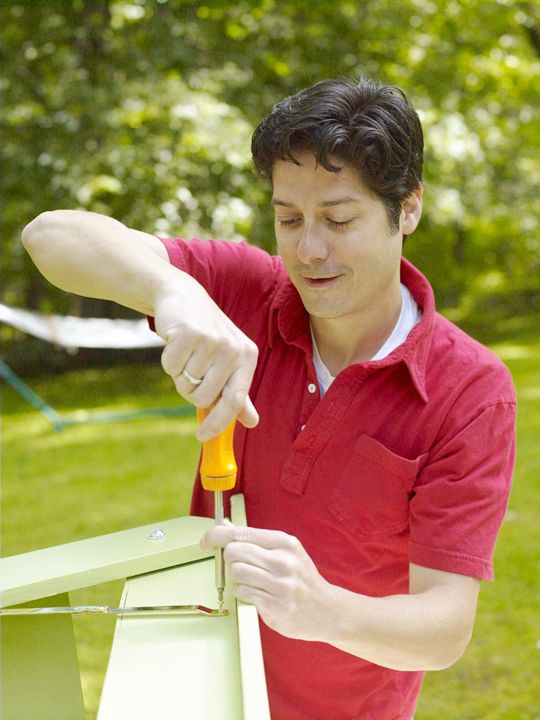
Mount the toy box hinge to the inside of the box, then to the underside of the lid on the same side as the piano hinge. Attach the folding door hinge to the outside of the box ½ inch from the top edge of the box on the opposite side as the piano hinge. Attach the other end of the folding hinge to the front edge of the leg. The ends of the hinge should be installed equal distance from the bolt hole at about 9 inches.
Screw a drawer pull to the back end of the box for easy lifting while extending the legs. Mount nonslip rubber strips or pads on the bottom of each leg and skid feet to the crosspieces on the underside of the box and to the back of the crosspieces between the legs.
Adding a Rug to the Lid
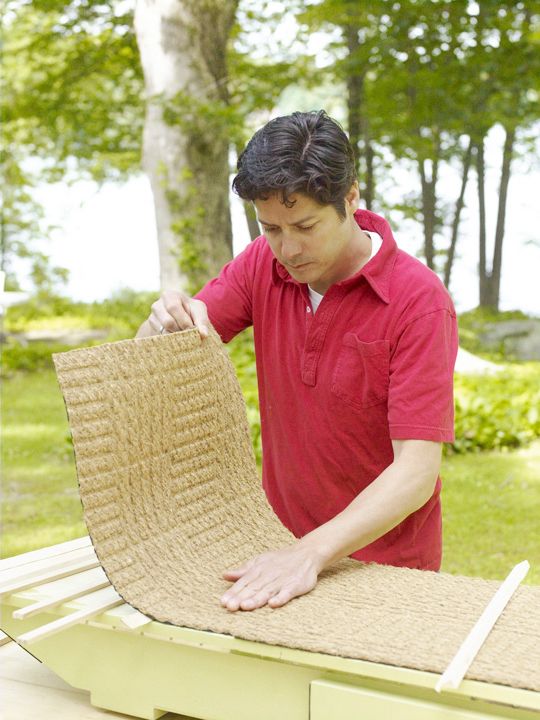
Cut a nonslip rug to the size of the lid. Roll contact cement onto the top of the lid and the underside of the sisal rug in a well-ventilated area. Allow the contact cement to dry to the touch. Place scrap strips of wood on top of the lid to keep the surfaces from making contact and instantly bonding before the rug is perfectly positioned.
Place the end of the rug flush with the end of the lid. Slowly remove the scraps, allowing the rug to bond to the lid, ensuring the edges stay flush with the lid’s edges. Work your way from one end of the lid to the other until the rug is secure.
For some, a dog ramp may be a project in conjunction with installing a dog door. In the video below, Kevin O’Connor and Tom Silva demonstrate how to build a dog door for a large canine.
Our Conclusion
Building a dog ramp is a thoughtful and practical way to improve your pet’s quality of life, especially as they age or if they have mobility challenges. Use positive reinforcement to introduce your dog to the ramp. Once they get the hang of using it, you’ll see just how much more independent and comfortable they become.
